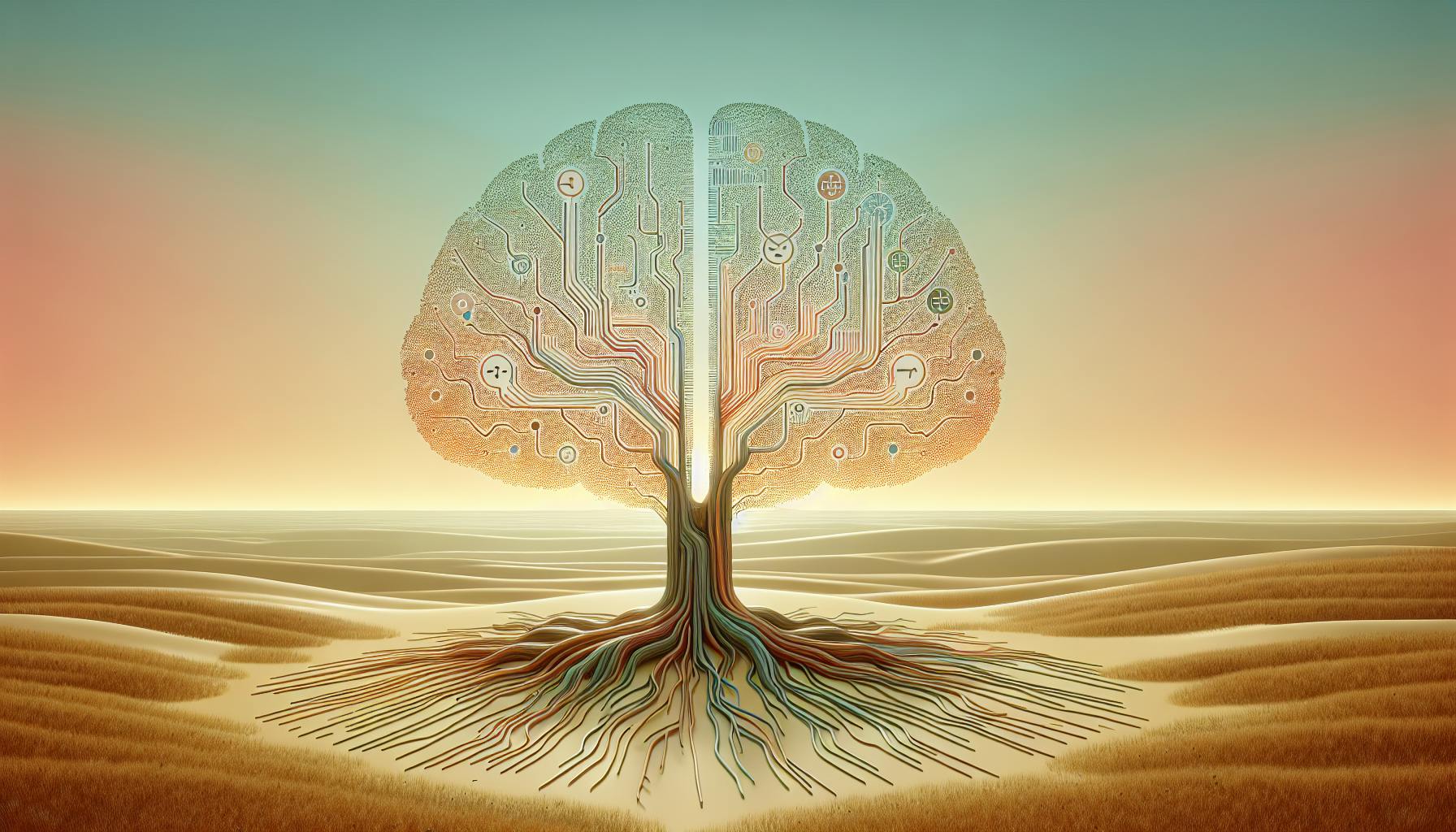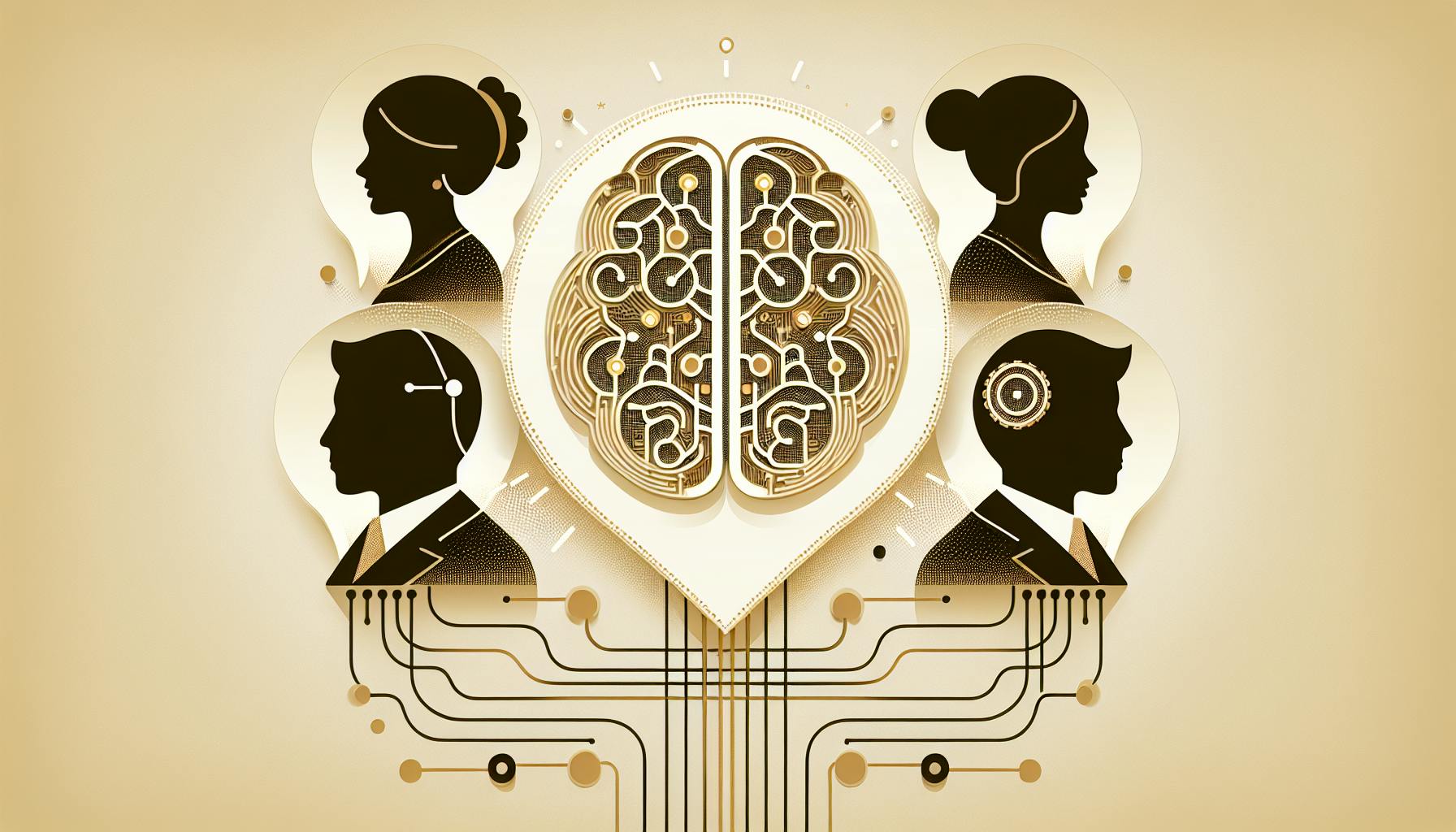We can all agree that while ChatGPT is an impressive conversational AI, it has limitations in capabilities.
By integrating open source AI programs, we can unlock new possibilities and create a more powerful customized ChatGPT experience.
In this post, we'll explore some of the best open source AI tools and how to integrate them with ChatGPT, from enhancing visual and audio interactions to niche applications in law, medicine, and more.
Harnessing Free Open Source AI for Enhanced ChatGPT Interactions
Open source AI programs offer exciting opportunities to customize and enhance ChatGPT interactions. By integrating free, publicly available AI tools and models, users can transform ChatGPT into a more powerful and specialized conversational assistant capable of tackling more complex queries across a variety of domains.
This introductory section defines key terminology, overviews the main benefits of combining open source AI with ChatGPT, and briefly introduces some popular open source AI software downloads to get you started. Understanding the open source AI landscape is the first step to unlocking a more personalized and productive ChatGPT experience.
Exploring the World of Free AI Tools and Platforms
Open source AI refers to publicly available AI libraries, frameworks, tools, algorithms, and models that anyone can freely access, modify, and distribute. These open source AI programs differ from proprietary or commercial solutions that limit user rights through restrictive licenses or subscriptions.
Key defining aspects of open source AI include:
- Free to download and use without licensing fees
- Publicly shared source code that is transparent and modifiable
- Fosters collaboration through open development models
- Customizable to user needs with fewer constraints
With free access to source code, open source AI empowers developers and enthusiasts to build customized solutions. It also enables the collaborative development of more robust models through community contributions.
Overall, exploring open-source AI tools like ChatGPT unlocks new possibilities for enhancing conversational AI like ChatGPT in innovative ways.
Amplifying ChatGPT with Open-Source AI Tools
Integrating open source AI tools with ChatGPT unlocks game-changing benefits:
- Increased capabilities: Open AI models bring specialized skills and knowledge to expand what ChatGPT can achieve. This includes everything from coding assistance to medical diagnosis.
- Customization: Mixing and matching open source models grants flexibility to tailor ChatGPT to specific goals. For instance, boosting creativity for writing projects.
- Accessibility: With free access to code, open source AI breaks down barriers to conversational AI innovation. This empowers wider demographics to customize ChatGPT affordably.
- User control: Greater transparency over model logic and open development fosters user agency over model behavior. This is invaluable for uses like finance or medicine.
With the right open source AI toolkit, ChatGPT transforms into a personalized assistant capable of conversing intelligently across more topics to truly amplify productivity.
Previewing Open Source AI Software Downloads
Many open source AI libraries and models exist that can integrate with ChatGPT using code libraries like the Transformers library. Some popular examples to investigate further include:
- GPT-Neo: Open source GPT model alternative to OpenAI's GPT-3 for natural language generation. Great foundation for conversational AI.
- Stable Diffusion: Powerful image generation model for composing creative images from text prompts. Allows generating visuals during conversations.
There is an exciting horizon of possibilities with open source AI advancements happening daily. This article provides a starting point for enhancing your personal or professional ChatGPT interactions using the latest free innovations in AI.
Which is the best open source AI?
Open source artificial intelligence (AI) frameworks allow developers to build and customize AI models. Some of the most popular open source AI tools include TensorFlow, PyTorch, Keras, and OpenCV.
TensorFlow by Google is one of the most widely used frameworks for machine learning and neural networks. It enables fast experimentation and ease of use through its comprehensive API. TensorFlow helps developers quickly build models without getting bogged down in low-level programming. Its flexible architecture allows deployment across platforms and devices.
Other notable open source AI libraries are:
- PyTorch - Offers dynamic neural networks and Python support. Easy to use and integrates with other Python libraries.
- Keras - A user-friendly neural network library written in Python. Runs seamlessly on TensorFlow, CNTK or Theano.
- OpenCV - Specialized for computer vision and image processing. Useful for facial recognition, object identification, and more.
These open-source AI tools provide customizable building blocks to create specialized chatbots. By leveraging such libraries, developers can build conversational agents with natural language processing and computer vision capabilities. The integrations empower users to customize ChatGPT's skills as per their unique needs.
So in summary, TensorFlow stands out as the best overall open source AI framework. Its simplicity, flexibility, and wide adoption makes TensorFlow a great starting point for developers new to building AI applications. Integrating TensorFlow models into ChatGPT unlocks new possibilities for customizing chatbot abilities.
Are there any free AI programs?
ChatGPT and other AI tools from large tech companies often require paid subscriptions for full access to features. However, the world of AI is rapidly evolving with many exciting open source projects that provide free access to powerful AI capabilities.
Some notable open source AI programs to be aware of include:
- JADBio: An intuitive open-source machine learning platform designed for beginners to build models without coding. It has an easy drag-and-drop interface to train models using datasets.
- Hugging Face Hub: A repository of thousands of open source AI models like CLIP and DALL-E that can be accessed for free through code or API. Many creators publish their models here.
- EleutherAI: A grassroots collection of independent researchers working on open source AI projects like GPT-Neo, which is an alternative open source version of GPT-3.
So while large language models like ChatGPT are locked behind paywalls, the world of open source AI tools is rapidly expanding access to powerful AI that anyone can use for free. The open source community plays an invaluable role in democratizing and decentralizing AI development.
With the right open source AI programs, you can gain free access to state-of-the-art AI capabilities to customize and enhance your ChatGPT experience. Check out open source hubs like Hugging Face and EleutherAI to tap into a treasure trove of open AI potential.
Which OpenAI is best?
OpenAI offers some of the most advanced AI platforms available today. OpenAI introduced ChatGPT, which has quickly become one of the most popular chatbot tools, allowing users to have natural conversations with AI. However, ChatGPT is not open source.
Other leading open source AI platforms and tools include:
- TensorFlow: Created by Google, TensorFlow is the most popular open source deep learning framework used for developing machine learning and neural network models. It powers many AI applications today.
- PyTorch: Developed by Meta AI, PyTorch is another robust open source machine learning library for Python focused on flexibility and speed. Like TensorFlow, it is commonly used for computer vision and NLP tasks.
- Keras: This high-level Python API makes building and training neural networks much easier on top of TensorFlow. Its simplicity and user-friendliness has made Keras a go-to for rapid prototyping.
When evaluating open source AI programs, consider factors like community support, documentation quality, versatility, and ease of use for your specific needs. With quality options like TensorFlow, PyTorch, and Keras - all available for free - open source AI enables anyone to start building the next generation of intelligent applications.
sbb-itb-b2c5cf4
What are the free OpenAI tools?
Open source artificial intelligence (AI) tools and programs are key for expanding access to AI and enabling creators to build customized AI solutions. Some popular open source AI tools include:
TensorFlow
TensorFlow is an open source machine learning framework developed by Google. It has a comprehensive ecosystem of tools and libraries that allows developers to create neural networks and other deep learning models. TensorFlow powers many Google services and is widely used by companies and individual developers for AI research and development.
PyTorch
PyTorch is an open source machine learning library used for applications like computer vision and natural language processing. It provides flexibility and speed for building deep learning projects and is gaining popularity in the AI community.
Scikit-learn
Scikit-learn is an open source Python library focused on classical machine learning algorithms like regression, classification and clustering. It features various algorithms for tasks like data mining, data analysis and predictive analytics.
Apache MXNet
Apache MXNet is a flexible and efficient library for deep learning. It scales efficiently across multiple GPUs and machines, making it well-suited for production environments. Major tech companies like AWS use MXNet for their deep learning services.
Accord.NET
Accord.NET is an open source .NET machine learning framework for audio and image processing. It can be used to develop applications involving computer vision, signal processing, statistics, and more.
These open source tools empower creators to build AI solutions tailored to their unique needs. Integrating them with ChatGPT unlocks even more possibilities to develop customized conversational agents.
Essential Open Source AI Libraries to Supercharge ChatGPT
Open source AI libraries like OpenCV, Mozilla's DeepSpeech, and TensorFlow can expand upon ChatGPT's capabilities and create a more powerful conversational AI assistant. Integrating these libraries into ChatGPT allows it to process and understand modalities like images, speech, and more.
Augmenting Visual Capabilities with OpenCV
OpenCV is an open source computer vision library that can enable open source AI programs like ChatGPT to interpret and describe visual information. By integrating OpenCV, ChatGPT could gain skills like:
- Object detection - Identify and locate objects within an image or video feed.
- Image classification - Categorize images into different classes based on their visual contents.
- Facial recognition - Detect, analyze, and compare human faces.
- Image segmentation - Separate images into multiple parts for finer-grained understanding.
For example, you could show ChatGPT an image of a park and ask it questions like "How many people are in the photo?" or "What are the people doing?". With OpenCV, ChatGPT would be able to accurately count the number of people and describe their activities in a detailed way.
Overall, OpenCV brings rich visual intelligence to ChatGPT, enabling more natural conversations that combine textual and visual information.
Enriching Audio Interactions with Mozilla's DeepSpeech
Mozilla's DeepSpeech is an open source speech-to-text engine that can give ChatGPT speech recognition capabilities. Integrating DeepSpeech would allow ChatGPT to:
- Transcribe audio recordings into text.
- Recognize speech commands and queries.
- Analyze audio data like sentiment, tone and more.
For example, you could record an audio question and DeepSpeech would automatically transcribe it. ChatGPT could then process the text and provide a relevant, contextually-aware response.
This takes conversational AI to the next level with multimodal experiences combining text, speech and more. DeepSpeech integration essentially gives ChatGPT ears to have richer dialogue.
Integrating TensorFlow for Multimodal ChatGPT Experiences
TensorFlow is Google's open source machine learning framework. Integrating TensorFlow modules into ChatGPT would enable it to jointly process multiple data types like text, images, audio and more.
Key benefits include:
- Multimodal reasoning - Combine insights across text, visual and speech data for a unified understanding.
- Transfer learning - Leverage TensorFlow's extensive catalog of pre-trained ML models.
- Native optimization - Harness GPU acceleration and performance optimizations in TensorFlow.
This empowers truly integrated conversational experiences. For instance, you could show ChatGPT an image while describing it verbally. TensorFlow would help ChatGPT jointly analyze both inputs to have a deeper, multimodal comprehension.
Overall, TensorFlow unlocks next-generation capabilities to evolve open source AI programs like ChatGPT.
Customizing Open-Source AI Chat GPT for Niche Applications
This section covers more niche open-source AI tools that allow you to customize ChatGPT with capabilities tailored to specific use cases and industries. With the right integrations, ChatGPT can gain expertise in law, medicine, and even music composition.
Legal Expertise with Open Source CaseLawGPT
CaseLawGPT is an open-source tool that equips language models like ChatGPT to provide enhanced legal assistance. It allows citing relevant case law to support legal analysis and positions.
Integrating CaseLawGPT can enable ChatGPT to:
- Retrieve relevant case law by keyword or legal concept
- Summarize the key details and implications of court decisions
- Compose legal briefs and arguments citing appropriate precedents
- Provide nuanced responses incorporating case law perspectives
This additional context helps ChatGPT form legally grounded responses beyond generic legal information. With a comprehensive dataset of over 2 million published case decisions, CaseLawGPT integration makes ChatGPT better suited for legal research and analysis.
Medical Insights with Open Source MedGPT
MedGPT brings disease diagnosis and medical question answering abilities to ChatGPT. It's trained on a dataset of medical journals, clinical notes, and patient conversations.
Adding MedGPT enables ChatGPT to provide:
- Accurate differential diagnosis suggestions based on symptoms
- Concise summaries of conditions, treatments, and procedures
- Patient-friendly explanations of complex medical concepts
- Evidence-based responses citing medical literature
Rather than generic health information, MedGPT allows ChatGPT to offer specialized medical advice while noting it's not a licensed professional. This makes ChatGPT better equipped to intelligently discuss health concerns.
Composing Music with Open Source Jukebox AI
Jukebox AI is an open-source model that generates musical compositions in different genres and styles. Integrating it with ChatGPT unleashes creative potential.
With Jukebox, ChatGPT can:
- Compose original melodies and instrumentals
- Generate musical ideas based on lyrics or emotional tone
- Arrange musical elements into full song structures
- Remix and interpolate existing songs into new compositions
Aspiring musicians can use this to turn inspiration into complete compositions. ChatGPT essentially becomes a creative collaborator, with Jukebox bringing the musicality.
These integrations demonstrate the power of customizing ChatGPT with niche open-source AI capabilities. Transforming a generalist into a specialist unlocks more targeted applications. As more domain-specific models emerge, ChatGPT's potential will grow exponentially.
Step-by-Step Guide to Integrating Free Open Source AI with ChatGPT
Integrating open source AI programs with ChatGPT can enhance its capabilities and allow you to customize it for your specific needs. Here is a step-by-step guide to seamlessly combine free open source AI tools like OpenAI Codex and BigScience BLOOM with ChatGPT.
Seamless Integration Methods for Open Source AI and ChatGPT
There are a few recommended methods to integrate open source AI models with ChatGPT:
- Leverage APIs - Many open source AI programs provide APIs to interface with them. You can pass inputs to these APIs and return the outputs to ChatGPT. For example, the Anthropic Claude API enables you to query Claude models through an API.
- Create pipelines - By chaining together multiple AI systems into an end-to-end pipeline, you can route inputs and outputs between them. For instance, you can use Hugging Face's Inference API to run inferences on custom models and return predictions to ChatGPT. - **Follow integration guides** - Some open source projects like BigScience provide ChatGPT integration guides to make combining the systems easy. Their BLOOM model can answer questions or continue conversations started in ChatGPT.
Frameworks and Tools for Effortless AI Software Combinations
Here are some helpful frameworks and tools for integrating open source AI:
- Hugging Face - The Hugging Face Inference API and other tools make deploying and querying AI models simple. This abstraction handles lots of complexity behind the scenes.
- TensorFlow Extended (TFX) - TFX is an end-to-end platform for deploying production ML pipelines. It has integrations with orchestration frameworks like Kubernetes which help when operationalizing multiple AI systems.
- NVIDIA Triton Inference Server - Triton enables high-performance inference serving. It can simultaneously run models from different frameworks like PyTorch and TensorFlow, useful when combining diverse open source AI programs.
Optimizing Open Source AI Integration for Scalable Deployment
When deploying open source AI integrations with ChatGPT at scale, consider these optimization tips:
- Follow compute budgets - Carefully monitor GPU/TPU usage when running multiple models to avoid excessive costs. Use auto-scaling groups to right-size resources.
- Enable batching - Process multiple requests together in batches instead of individually to improve throughput and efficiency.
- Use load balancing - Distribute inference requests across multiple server instances. This allows your integration to handle spikes in traffic volume.
- Optimize latency - Reduce network hops and trips to disk to lower inference latency. Strategies include caching commonly accessed files in memory.
By leveraging the right integration patterns and optimization techniques, you can effectively combine the innovative capabilities of open source AI projects with ChatGPT while managing operational constraints. This allows you to create customized conversational agents tailored to your unique needs.
Envisioning the Evolution of Open Source AI Platforms with ChatGPT
Summarizing the Synergy between Open Source AI Tools and ChatGPT
ChatGPT provides a strong foundation for conversational AI, but integrating complementary open source AI tools can greatly enhance its capabilities. Key advantages unlocked through this open source AI integration include:
- Access to cutting-edge AI models like image generators, speech recognition, etc.
- Customization for niche tasks ChatGPT may not handle well out-of-the-box
- Potential for more rapid innovation by leveraging open source communities
- Ability to deploy AI tools on-premises or in private cloud infrastructure
By combining ChatGPT with specialized open source AI software, developers and companies can create customized conversational experiences tailored to their specific needs and priorities.
Emerging Trends and Future Directions in Open Source AI
The open source AI ecosystem continues to rapidly advance, providing glimpses into future innovations that may shape next-gen conversational AI:
- Multimodal AI combining text, images, speech, etc. into unified models
- Techniques like chain-of-thought prompting and memory networks
- Transparent and ethical AI initiatives
- Efforts to reduce computational costs of large language models
As the open source community drives progress in these areas, integrating such capabilities into ChatGPT could significantly move the needle on conversational AI versatility, explainability, and accessibility over time.


